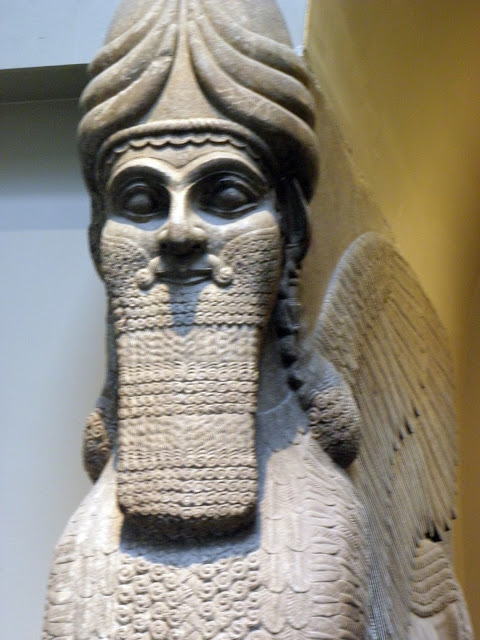I can't say I saw the whole thing. I was only there for a few hours, but it is a splendid museum full of antiquities acquired in various ways from all over the world. One wonders of course how the torso of a Greek sculpture is in the British Museum while the head is in a museum in Vienna or the rest of it in Athens. At the time the British, French, Austrians and others were acquiring these objects the locals in these countries may have been indifferent at best and at worst, hostile. Early Christians as well as Muslims were not necessarily kind to the times before the advent of those great religions, although the Christians may have been worse than the Muslims in this regard.
Inside, the museum opens onto a large enclosed space known as the Great Court, which was renovated in 2001, with a large transparent dome covering the large space between wings of the museum. 

The court area is primarily a place to rest, relax, and visit the museum shops. There are several places to eat, including one at the top of the round reading room. The Round reading room used to be the home of the British Library. I took the curving staircase to the top of this curious structure, but never ventured inside it.
The parts of the museum I visited were concerned with ancient Egypt, Greece, Ancient Rome, and Assyria. This figure of Ramesses II dominates one of the halls. It is huge but is itself only a fragment of the original figure, body and all. Ramesses II lived from 1303 to 1213 BC, 93 years. This was originally at the Ramuseeum in Thebes, a mortuary temple built for Ramesses II. 

The museum has an extensive collection of friezes and sculptures from Nineveh in Assyria. Sennercherib (704-681 BC) chose Nineveh on the Tigris river as his new capital and constructed a palace there. Their chief rivals in the area were the Babylonians.
An example of Cuneiform writing used by the Assyrians, and one of the earliest forms of writing.
And an example of Egyptian hieroglyphics, which were deciphered after the discovery of the Rosetta stone, which presented the same text in Greek, Demotic, and Hieroglyphics, a multilingual decree promulgated by Ptolemy V in 196 BC. The Rosetta stone is also in the British Museum.
I was getting tired by the time I took this picture. Exactly when in Egyptian history this was created I can only guess.
A female mummy I presume.
A golden faced male mummy Number 6678.
Ancient Egyptian burial in a basket.
This is one of the better preserved of the Elgin Marbles, with the heads of the two combatants a centaur and a lapith fighting. These were representations of pre-Hellenic times according to Greek mythology. These were created in 447-438 BC for the Parthenon. The 7th Earl of Elgin, who was British Ambassador to the Ottoman Empire obtained permission to remove these sculptures from the Parthenon, as the Ottomans didn't much care about them, and pieces that fell from the structure tended to be burned by the locals to produce lime (1).
A particularly fine sculpture of a horse head, a fragment from a lost larger sculpture.
This was the Hermes of Kew, another antiquity that used to grace the gardens at the Royal Palace at Kew. Like many antiquities suffering the ravages of time and weather and critics, the nose and the junk was the first things to go.
This is a frieze that seems to show a series of servants bringing foodstuffs to a banquet.
This is a sculpture found in Cyprus showing both Egyptian and Phoenician influences, circa 450 BC.:
Terracotta votive head, Etruscan circa 300-200 BC.
It looks like someone who thinks they forgot to turn off the stove before leaving home, and now they are miles away.
This is an example of a stone dramatic mask to decorate a theater perhaps in Rome in the 1st-2nd century AD:
The British museum is such a massive collection of antiquities that it would be hard to do it justice if you spent a week in there. I spent maybe three or four hours there. Museum fatigue sets in and you just can't look at any more. The expanse of human history and the portion lost to human memory is mind-boggling.
The End




















No comments:
Post a Comment